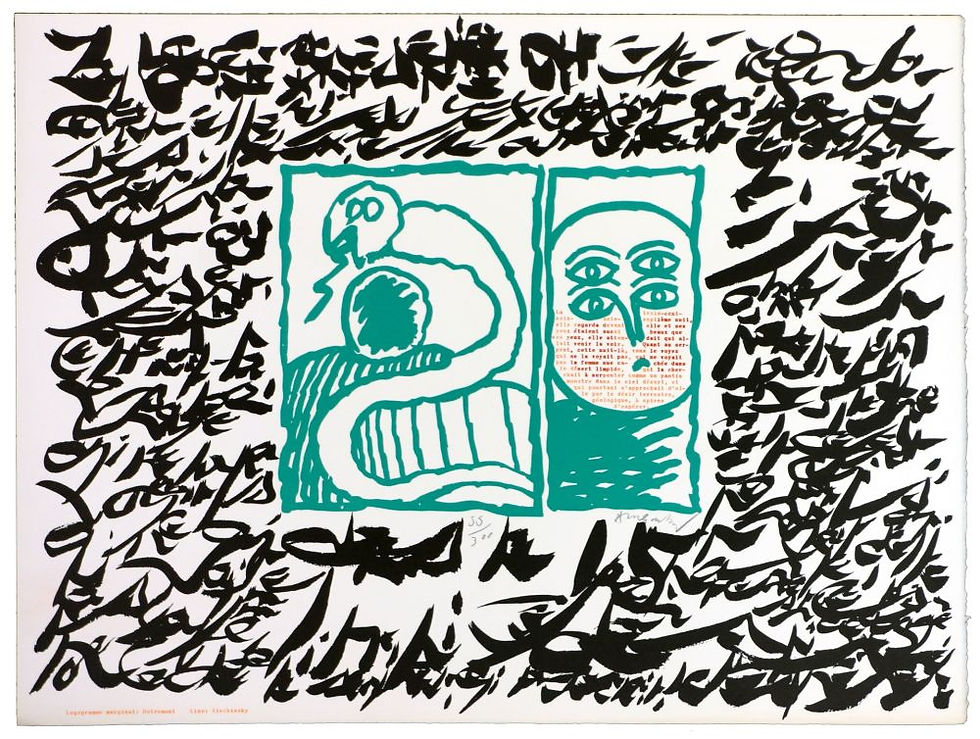What is the CoBrA Movement?
- jonathan-pradillon

- Dec 21, 2024
- 3 min read
The CoBrA movement, founded in 1948 in Paris, was an association of European artists seeking to break away from the artistic conventions of their time. Its name is an acronym formed from the capitals of the founders’ countries: Copenhagen, Brussels, and Amsterdam. Key figures in the movement include Christian Dotremont, Joseph Noiret, Karel Appel, Constant, Corneille, and Asger Jorn. CoBrA is known for its emphasis on spontaneous, experimental, and collective artistic expression.

Origins and Foundation of the CoBrA Movement
After World War II, the European art scene was divided between abstraction and figuration. Dissatisfied with this polarization, CoBrA artists proposed an alternative approach based on instinct and intuition. They aimed to move beyond theoretical debates and reinvent art through a liberated, non-academic perspective.
On November 8, 1948, at the Notre-Dame café in Paris, the founding members signed the manifesto The Cause Was Heard, written by Christian Dotremont. This foundational text expressed their rejection of dominant artistic conventions and their desire to promote a collective, spontaneous, and authentic form of art. The movement was a radical response to the trauma of war, advocating for an artistic expression that reconnected with the essence of human creativity.
Artistic and Aesthetic Principles of CoBrA
CoBrA artists emphasized an intuitive approach, drawing inspiration from unconventional sources such as primitive art, children’s drawings, folk art, and works created by individuals with mental disorders. They celebrated spontaneity, experimentation, and raw emotional expression, rejecting academic traditions and pursuing a sincere creative process.
CoBrA works are characterized by vibrant colors, organic forms, and free-flowing gestures. These artworks convey a dynamic energy that defies the rigid aesthetics of the time and celebrates the vitality of instinct. Collaboration was also key to the movement, with artists merging their individual contributions into cohesive collective works.
Activities and Influence of the CoBrA Movement
Although short-lived (1948-1951), CoBrA left a lasting impact on modern art. Its members organized major exhibitions, such as the 1949 show at the Stedelijk Museum in Amsterdam. They also launched the magazine Cobra, which served as a platform to share their ideas and showcase their creations to a wider audience.
CoBrA’s influence extended beyond its era, inspiring subsequent movements and encouraging artists to rethink their creative processes. The collective work and constant pursuit of innovation championed by CoBrA helped redefine the boundaries of contemporary art.
Dissolution and Legacy of CoBrA
The CoBrA movement officially disbanded in 1951, but its ideals and spirit continue to inspire. Artists associated with CoBrA pursued their creative explorations independently while remaining true to the experimental energy that defined the group.
Today, institutions like the CoBrA Museum of Modern Art in Amstelveen, Netherlands, preserve and celebrate the movement’s legacy. CoBrA remains a vital chapter in modern art history and a source of inspiration for contemporary artists.
FAQ
When and where was the CoBrA movement founded?
The CoBrA movement was founded in 1948 at the Notre-Dame café in Paris.
Who were the key artists involved in CoBrA?
Notable members include Christian Dotremont, Joseph Noiret, Karel Appel, Constant, Corneille, and Asger Jorn.
What are the artistic principles of CoBrA?
CoBrA emphasized spontaneous, intuitive, and collective creation, drawing inspiration from primitive art, children’s drawings, and folk art.
What is CoBrA’s influence on contemporary art?
CoBrA inspired modern art movements by promoting experimentation, collaboration, and artistic freedom.
Where can CoBrA artworks be seen today?
The CoBrA Museum of Modern Art in Amstelveen, Netherlands, houses a significant collection of works from the movement.rve et expose une importante collection d’œuvres du mouvement.




Comments